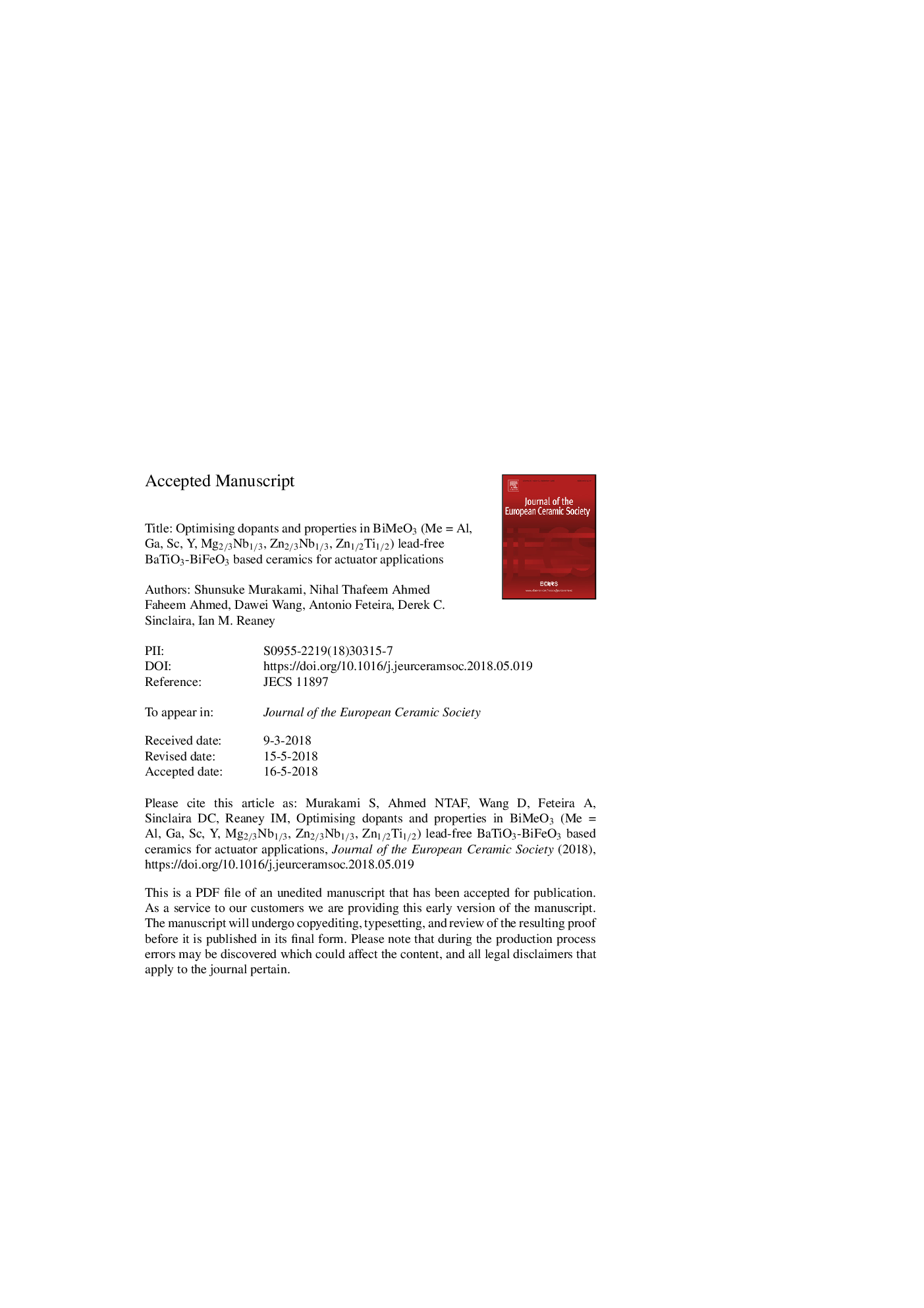| Article ID | Journal | Published Year | Pages | File Type |
|---|---|---|---|---|
| 7897814 | Journal of the European Ceramic Society | 2018 | 34 Pages |
Abstract
A crystallochemical framework is proposed based on electronegativity difference (en) and tolerance factor (t) to optimise the BiMeO3 dopants and therefore the piezoelectric and high-field strain response in BaTiO3-BiFeO3 based ceramics. Compositions in the series 0.05Bi(Me)O3-0.25BaTiO3-0.7BiFeO3 (BMe-BT-BF, Me: Y, Sc1/2Y1/2, Mg2/3Nb1/3, Sc, Zn2/3Nb1/3, Zn1/2Ti1/2, Ga, and Al) were fabricated using solid state synthesis and furnace cooled. Scanning electron microscopy and X-ray diffraction revealed that only Bi(Mg2/3Nb1/3)O3 and BiScO3 dopants, which lie in a narrow range of en vs. t, form homogeneous ceramics, free from secondary phases reflected in their superior piezoelectric coefficients (d33 â¼145 pC/N). All other BiMeO3 additions exhibited either secondary phases (Y) and/or promoted a two-phase perovskite matrix (Zn, Ga and Al). The promising initial properties of BiScO3 doped compositions prompted further studies on 0.05BiScO3-(0.95-x)BaTiO3-(x)BiFeO3 (BS-BT-BF, xâ¯=â¯0.55, 0.60, 0.625, 0.65, and 0.70) ceramics. As x increased the structure changed from predominantly pseudocubic to rhombohedral, resulting in a transition from a relaxor-like to ferroelectric response. The largest d33* (465â¯pm/V) was achieved for xâ¯=â¯0.625 under 5â¯kV/mm at the crossover from relaxor to ferroelectric behaviour. BS-BT-BF with xâ¯=â¯0.625 showed >0.3% strain under 6â¯kV/mm up to 175â¯Â°C, demonstrating its potential for actuator applications.
Related Topics
Physical Sciences and Engineering
Materials Science
Ceramics and Composites
Authors
Shunsuke Murakami, Nihal Thafeem Ahmed Faheem Ahmed, Dawei Wang, Antonio Feteira, Derek C. Sinclair, Ian M. Reaney,
